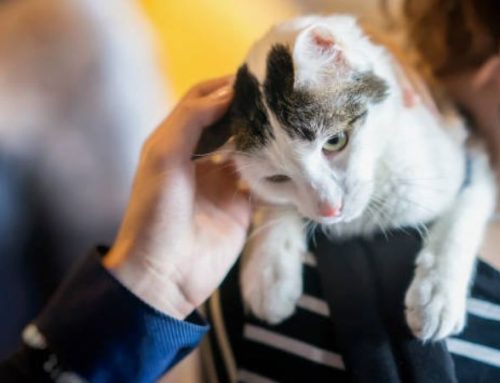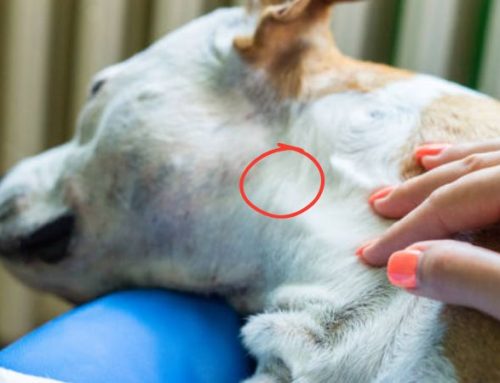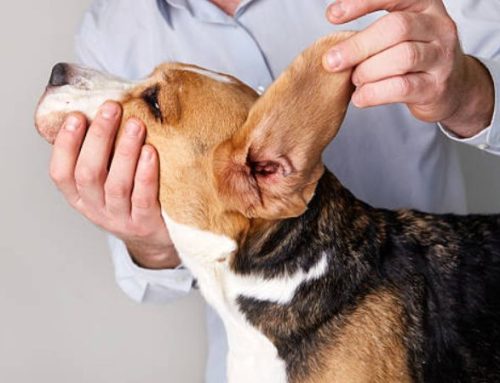Saying goodbye to a beloved cat is never easy, but understanding the subtle signals of their final days can help you face this chapter with compassion and readiness. Cats are experts at hiding pain, often masking their decline until the very end. By recognizing these quiet cues, you can step in with timely care, comfort, and veterinary support—ensuring their last moments are filled with peace, dignity, and love.
What to Expect as a Cat Nears the End of Life
As cats grow older, their bodies begin to slow down much like humans. The aging process can bring gradual changes such as reduced activity, longer sleeping hours, decreased appetite, or a less glossy coat. These shifts are part of a natural decline as the body conserves energy and organs begin to function less efficiently. Toward the end of life, cats may also become less responsive, seek solitude, and show a preference for quiet, comfortable spaces.
It’s important, however, to recognize the difference between a cat naturally nearing the end of life and one experiencing symptoms of a potentially treatable illness. Conditions such as kidney disease, hyperthyroidism, infections, or dental problems can mimic end-of-life signs like weight loss, lethargy, or loss of appetite. In many cases, timely veterinary intervention can manage these illnesses, restore comfort, and extend your cat’s quality of life.
10 Common Signs of a Dying Cat or Kitten
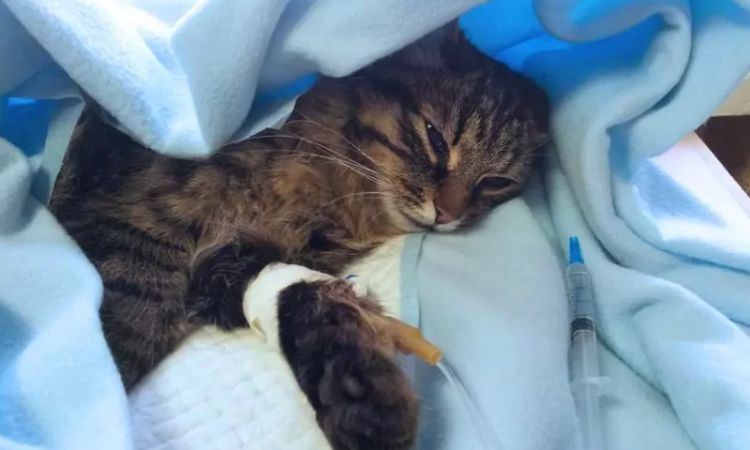
1. Loss of Appetite and Extreme Weight Loss
A pronounced decrease in appetite is one of the earliest indicators that a cat or kitten may be approaching the end of life. They may refuse both food and water, even items that were previously irresistible. Over time, this can result in significant weight loss, with muscle wasting becoming increasingly noticeable.
The once-strong, playful body begins to appear frail, and kittens may fail to grow or lag behind their siblings in development. Consistent monitoring of eating and drinking habits is crucial, as sudden changes can alert caregivers to the need for urgent veterinary evaluation or supportive care.
2. Severe Weakness and Lethargy
Extreme fatigue and general weakness are hallmark signs of a cat in decline. A cat may sleep for the majority of the day, rarely responding to familiar voices or touch. Simple movements, such as standing, walking, or climbing, can become difficult or impossible.
Some cats may struggle to lift themselves or show trembling as they attempt to move, while kittens may collapse under their own weight. This profound lethargy reflects the gradual shutdown of organ systems and highlights the importance of creating a safe, comfortable environment that minimizes the need for exertion.
3. Difficulty Breathing
Respiratory distress is another critical warning sign. Cats may exhibit labored breathing, open-mouth panting, or shallow, irregular respirations that deviate from their normal pattern. Some may make subtle, almost imperceptible efforts to breathe, while others may vocalize signs of discomfort or anxiety.
Breathing difficulties can be caused by underlying illness, heart or lung problems, or the natural progression of the body’s decline. Prompt recognition allows caregivers to provide supportive care and, if necessary, seek veterinary intervention to ease discomfort.
4. Changes in Heart Rate and Circulation
Circulatory and cardiovascular changes often accompany the dying process. You might notice a weak or irregular pulse, a slowed heartbeat, or variations in rhythm that are uncharacteristic for your cat. Extremities, including paws, ears, and tail, may feel unusually cold due to reduced blood flow.
These physiological changes signal that oxygen and nutrients are no longer efficiently circulating through the body. Observing these signs helps caregivers prioritize comfort and understand the severity of the cat’s condition, emphasizing the need for gentle handling and supportive care.
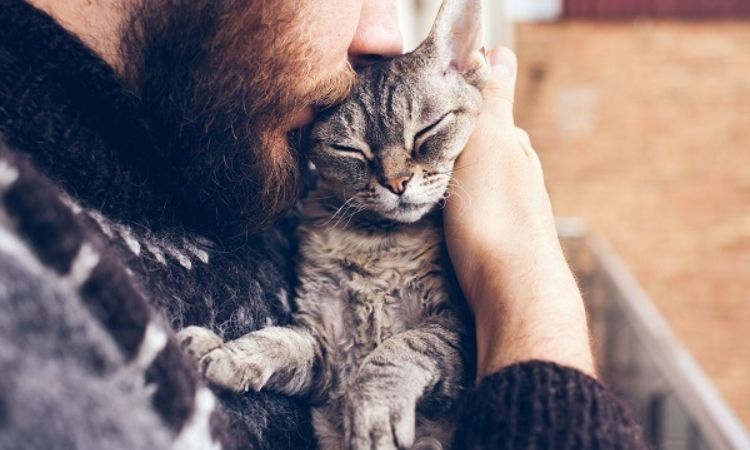
5. Loss of Coordination and Mobility
A dying cat frequently loses the ability to move gracefully or maintain balance. They may stumble, collapse, or drag their limbs when attempting to walk. Some cats may refuse to move at all, choosing instead to remain in one location for extended periods.
This loss of mobility is often caused by a combination of muscular weakness, fatigue, and neurological decline. Providing soft, secure bedding, minimizing obstacles, and reducing the need for movement can help maintain comfort during the final days, while also preventing injuries from falls or overexertion.
6. Hiding Behavior and Social Withdrawal
As cats near the end of life, they often seek solitude in quiet, dark spaces, away from familiar sights and sounds. This instinctive behavior may be their way of feeling safe or avoiding interaction while feeling vulnerable. Cats that were once affectionate may lose interest in cuddling, petting, or play, appearing distant or indifferent to their caregivers.
Observing such withdrawal is an important emotional signal, indicating that your pet may be experiencing discomfort, confusion, or the natural decline associated with aging or terminal illness.
7. Loss of Bladder and Bowel Control
In the final stages, cats may experience difficulties controlling their elimination. Frequent accidents outside the litter box, inability to reach it in time, or unusual positions during urination or defecation can indicate severe weakness or neurological decline.
Changes in the appearance, color, or consistency of urine and stool may accompany these issues, reflecting internal organ stress or dehydration. Monitoring these signs allows pet owners to respond with supportive care, including easier access to a litter box and regular cleaning to maintain hygiene and comfort.
8. Unkempt Fur and Poor Grooming
Cats are typically meticulous about grooming, so a sudden decline in fur maintenance can signal serious health problems. A dying cat may develop a dull, matted coat, often accompanied by a noticeable odor from the body, fur, or mouth.
This neglect of self-care results from weakness, lethargy, or pain, preventing the cat from performing normal grooming routines. Ensuring gentle cleaning, soft bedding, and close observation can help maintain comfort and reduce additional stress during their final days.
9. Seizures or Neurological Changes
Neurological disturbances are another sign that a cat’s condition is critical. Sudden confusion, disorientation, circling, head pressing against objects, or even full seizures may occur. In some cases, cats collapse unexpectedly and fail to recover quickly.
These changes can result from severe illness, metabolic imbalance, or advanced organ failure, and often require immediate veterinary attention. Even if intervention is not curative, recognizing these signs helps owners provide palliative care and maintain safety for the cat during these distressing episodes.
10. Unresponsiveness or Coma-like State
In the final stage of life, cats may enter a state of minimal responsiveness. They may show almost no reaction to sound, touch, or familiar voices, remaining motionless for extended periods. Long periods of unconsciousness, akin to a coma, are often the body’s natural way of conserving energy while shutting down vital functions.
Observing this state can be deeply emotional for caregivers, highlighting the importance of remaining present, speaking softly, and ensuring a calm, comfortable environment to support the cat’s dignity in its final moments.
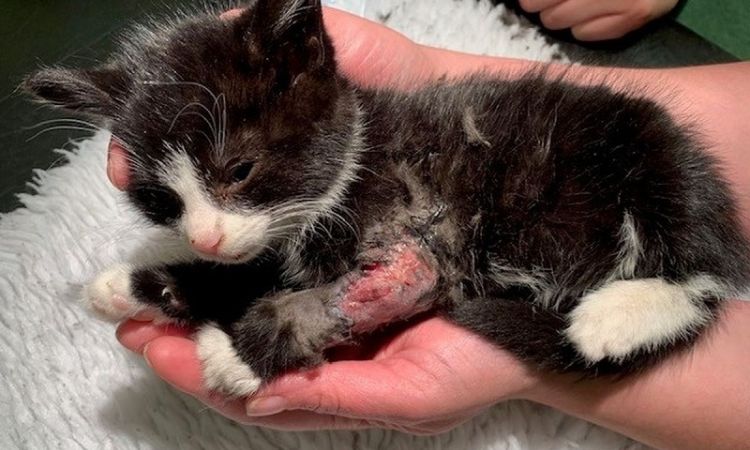
How to Comfort a Dying Cat or Kitten
- Keep Them Warm: Cats nearing the end of life can struggle to maintain body heat. Provide soft blankets or a cushioned bed, and consider a low-heat heating pad wrapped in a towel to keep them cozy without risk of burns.
- Create a Quiet, Comfortable Space: Place your cat in a calm, peaceful area away from loud noises and household activity. Soft bedding in a secluded spot allows them to rest undisturbed and feel secure.
- Gentle Hydration: Ensure your cat stays hydrated by offering small amounts of water or vet-approved fluids. You can also use a damp cloth to moisten their mouth or fur if they cannot drink on their own.
- Reduce Stress and Alleviate Pain: Minimize handling and loud interruptions, keeping the environment calm. Speak softly, maintain a gentle presence, and provide any veterinarian-recommended pain relief to ensure their final moments are as comfortable as possible.
- Offer Comfort and Companionship: Sit quietly with your cat, gently petting or stroking them if they welcome it. Your calm presence provides reassurance and emotional support during this sensitive time.
As you navigate this difficult time, remember that your presence and comfort are the greatest gifts you can offer your beloved cat. While these signs can be heartbreaking to witness, they also serve as a guide, helping you to provide the most compassionate and loving end-of-life care. Cherish the time you have left, and know that you have given your feline friend a wonderful life.




